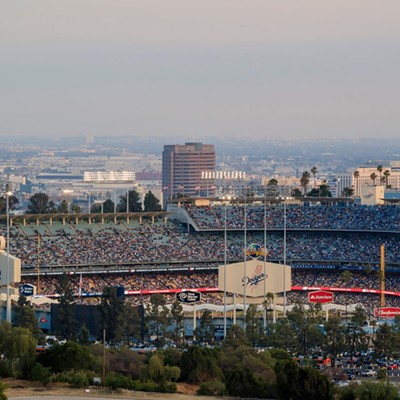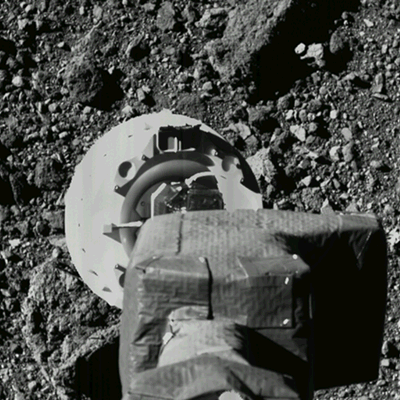This is the idea behind Arizona Sky Village, a planned community a little more than 150 miles southeast of Tucson, just this side of the New Mexico state line. With several houses already built and dozens more either under construction or in the final planning stages, ASV may be fast on its way to becoming the premiere astronomy village in the country.
It's oddly pleasant to live in a state so big and rugged that, in order to get to some parts of Arizona, you have to leave Arizona. If you want to go to Fredonia, way up north, the best way to get there is to go from Page up to Kanab, Utah, and then back down. Likewise, if you want to go to the polygamist community of Colorado City, about 40 miles west of Fredonia, you have to leave Arizona and enter the Twilight Zone.
(Of course, Alaska has everybody beat. In order to get from its largest city, Anchorage, to the state capital in Juneau, you not only have to leave the state; you have to leave the country, heading into Canada, through a delightfully named place called Destruction Bay, before heading back into Alaska's southern panhandle.)
The nearly three-hour drive to Arizona Sky Village isn't exactly breathtaking. It's mostly on Interstate 10, and once you get past the intricate rock formations of Texas Canyon and the wonderfully incongruous Popeye's Chicken at the truck stop in Willcox, it's just flat land, with railroad tracks and rusted shacks. At night, the huge power plant in the Sulphur Spring Valley, south of Willcox, is a sight, but in the daytime, it's just the occasional apple or pecan grove and the blink-and-you'll-miss-them towns of Bowie and San Simon.
A few miles past San Simon is the New Mexico state line, and a few miles inside New Mexico is the ubiquitous fireworks stand. You turn south onto Highway 80 and head down into ranching and copper-mining territory. About 20 minutes into that leg of the journey, there is a large cluster of buildings sitting in the middle of nowhere off to the east of the road.
A billboard proclaims it to be Sky Gypsy Plaza.
The Sky Gypsies are the brainchild of John McAfee, the billionaire who founded McAfee (anti-virus) Software, cashed out back in the mid-'90s, and then became a yoga master. The Gypsies are an exclusive group of people who fly ultralight airplanes, sometimes just a few feet off the desert floor and/or through the rough terrain of the Chiricahua Mountains. The 150 or so members (club membership is by invitation only, reportedly costs $200,000 per person and prohibits alcohol) can go out for a flight of up to 300 miles, land at the airstrip he built north of Rodeo, park their planes in a hangar and go into the café for breakfast.
They can even spend the night in one of a series of antique, 1940s-era Airstream trailers, complete with a car from that year to match. McAfee has a Silver Bullet that was once owned by Howard Hughes. He recently spent six months scouting locations and buying land for his new sites, and over the next couple of years will spend tens of millions of dollars to create an 1,100-mile circuit of Sky Gypsy bases, each of which will contain an airstrip, hangars and living accommodations.
Some environmentalists are not happy with McAfee and his band of desert-floor divers, but he counters that nothing is touched, and therefore, nothing is disturbed. Others simply bristle at the concept of the super-rich boys' flying club. And, of course, there are still those who believe that McAfee's overhyping of the Michaelangelo computer virus in 1992 helped make him the bazillionaire he is today.
Just before heading into Rodeo proper, there's a small turnoff for Route 533, back into Arizona. It's only a couple of miles from there to Arizona Sky Village (cell phones continue to display New Mexico's Mountain time zone even in Portal), but the change in elevation is noticeable.
The observatory/houses can't be seen from that road, but after turning into the road to ASV, they appear as if by magic. They are on streets with names like Milky Way and Starlight, impeccable Southwest-style houses, flat and squat and functionally rectangular; for the most part, they're not unlike homes seen in different parts of Tucson. Some of the houses are prefabricated and shipped in from California to save on--pardon the expression--the astronomical building costs in such a remote location.
But then, at one end of each house, is the dome, unmistakably for a telescope. If a camel is a horse built by a committee, these structures are houses built by a committee of geeks.
There are only a few houses built thus far, but those that are in place offer a rare sight. Standing at the east end of the development and looking west, the sight of the domed houses silhouetted against the Chiricahua Mountains just beyond is absolutely surreal. One house has two domes (Freud would have a field day with telescope envy), and a couple of others have domes built away from the houses. Those stand-alone domes are operated by their owners via remote control from anywhere in the world. One guy told of sitting in a hotel room one day in Sydney, Australia, opening up his laptop and, after a few simple instructions, finding himself staring at a live feed of the Arizona night sky through his own telescopic lens.
Arizona Sky Village isn't the first such astronomy village in the country, but it aims to be the best. The first such cluster sprang up pretty much by accident back in the 1980s, when amateur astronomer Billy Dodd went looking for a dark place to stare at the heavens. A retired baker, Dodd (who died just a few months ago) and his wife would drive through Florida looking for a spot relatively free from light pollution. Dodd finally found such a location about three hours north of Tampa, not far from the Gulf of Mexico.
South of a small town called Chiefland, Dodd bought six acres, built an observatory and went at it. A few years later, he subdivided his property and sold plots to like-minded skywatchers. Chiefland became an astronomy village when one buyer, Tom Clark, bought a few acres and turned three of them into a communal stargazing field. To this day, people pull up in their RVs, pull out their telescopes and get all astronomical.
Residents and visitors hold star parties, with sometimes as many as 300 people gathering on the communal field. It's friendly and easy-going, but strict rules are observed. The biggest rule: "No white lights anywhere from dusk 'til dawn." That includes car headlights and even dome and trunk lights in cars, as well as lights inside houses and RVs. There is also a "quiet time" observed until around noon, since many of the astronomers will stay up all night looking at the sky.
One of the early residents of Chiefland was Jack Newton, a retired store manager with a passion for astronomy. While Newton enjoyed the easy ambience of Chiefland, it nevertheless had the feel of, "I came to look at some stars, and a community broke out." Perhaps it was because he had a managing background, or maybe it was because scientists (even the officially amateur kind) are horribly anal, but Newton thought he had a better idea: Where Billy Dodd had used a fairly random approach in establishing his observatory base, Newton and fellow Floridian Gene Turner decided to take a scientific approach.
They got one of those way-cool NASA dark-skies map (like the one where you can see that the residents of North Korea use about the same amount of electricity at night as the people in the heart of the Amazon) and superimposed it over a road map of Arizona. They found the darkest place in Arizona and drove there, there being Portal, a "town" of about 100 people that consists mainly of a post office, a cozy diner and, thank goodness, a pay phone.
They were somewhat surprised to find land available for sale, considering that more than 80 percent of Arizona is federal, state or Indian reservation land. The partners grabbed up 450 acres right near the entrance to Cave Creek and went to work.
Arizona Sky Village was created, and strict dark-sky covenants were implemented. The area was divided into 85 plats, each at least four acres in size.
While this is certainly the story of how a good idea can blossom into something great, it's not exactly a tale involving blood, sweat and tears (neither the band nor the metaphor): Newton picked up the phone, called some of his sky-geek acquaintances and sold 33 lots the first weekend. Land values in the Village have doubled in the past four years.
The Village will also include 11 houses that will have fractional ownership. (That's a euphemism for the dreaded term "time-share.") Preconstruction prices average around $7,500 per annual week. Each house will have high-speed Internet access, a 14-inch computerized telescope and remote robotic wide-field telescope links.
Gene Turner lives in the Village year-round. (Newton and his wife, Alice, split time between Arizona in the fall and winter, and a bed-and-breakfast they operate in Canada during the summer months.) Turner is the on-site partner, and to say that his husky growl of a voice features the zeal of a salesman is like saying that Stevie Ray Vaughan liked to strum a guitar. One of his job descriptions might be that of salesman, but this guy is a believer.
The approach to Turner's house on the west edge of the development is a dirt-and-rock (I'm being kind here) "road" that was reconfigured by a late-summer rainstorm. If driving in a Honda or some other generic, non-four-wheel-drive vehicle, it's best to do so at speeds approaching zero miles an hour. After surviving that 100 yards or so, all of your fillings will still be in your mouth, but they might not be in their original teeth.
Turner is outgoing and gregarious, and can't wait to show off the Village. But he quickly points out that "no matter how special what we've built here is, we're nothing compared to the natural wonder of Portal."
You just know he's said that a whole lot of times before, but you also are absolutely certain that he believes it. And why shouldn't he? A couple of miles west of the Village, the road winds up into the mountains, which eventually rise to 10,000 feet toward the Cave Creek area. The area features hunting and fishing, campsites and hiking trails. There is the Wonderland of Rocks, where boulders balance precariously on small, natural pedestals, and on the other side of the range is the Cochise Stronghold, where the legendary Apache chief lived and evaded U.S. Army troops.
"A lot of people like to go birding around here," Turner offers. (Apparently, "bird-watching" is not the proper term.) "It's not my favorite thing, but a lot of the Village residents enjoy it. I prefer horseback riding, but most of us around here can't wait for the sun to go down."
Among those residents are Fred Espenak, who is the eclipse expert for NASA, and Wayne and Sylvia Baggett, who have both worked on the Hubble Space Telescope. Newton is proud of the mix of professional and amateur astronomers who populate the village: "There are some very dedicated people here, and we all share the passion for the sky. It just never gets old."
Newton has had that passion since his teen years, when he spent his paper-route money to improve on the small telescope his parents had bought him. "Kids at school didn't believe that I could see the craters on the moon (through the telescope), so I had to prove them wrong."
Now in his 60s, Newton is recognized as one of the top astro-photographers in the world. He is a frequent contributor to Sky and Telescope, Astronomy and Sky News, and his work has appeared in Life, National Geographic and Newsweek. He has been honored countless times for his pioneering work in the development of high-resolution tri-color imaging. Newton and his wife were honored by the naming of Asteroid 30840 as "Jackalice" by the International Astronomical Union. The asteroid was discovered by longtime Tucsonan David Levy and Caroline Shoemaker, the pair who discovered the comet that crashed spectacularly into Jupiter in July 1994.
Newton says that he and Turner "just knew" that they had found the perfect spot when they first set eyes on the site. Turner says that at night, "It's ink-black, dead dark, one of the darkest places in the country."
And that it is.
Everybody knows that the key to real estate is location, location, location. Nestled into the hills on the east slope of the Chiricahuas, the Village is almost completely free of light pollution. The towering mountains block all light from Tucson, as well as that from the small towns of Douglas and Bisbee and the growing city of Sierra Vista to the southwest. It's well more than 100 miles to Las Cruces, N.M., to the east, and the million-plus population center of El Paso, Texas, and Juarez, Mexico, is behind yet another mountain range, the Organ Mountains.
Arizona and New Mexico also have strong laws concerning outdoor lighting. Many communities insist that outdoor lighting on billboards and street lights be shielded and/or directed downward, or be shut off altogether after certain hours. This adds to the blackness at Portal.
There is something called the Bortle Index that measures the relative darkness of the night sky. A level of 1 is the darkest possible sky, found in the middle of the Sahara Desert. A thumbnail description of that level says that the night sky is "annoyingly bright" and that some people are fooled by the rising of the Milky Way into thinking that dawn is approaching.
At a Level 2, which is what is found at the Arizona Sky Village, if one were to hold his hand above a sheet of white paper on a moonless night, the light from the Milky Way would cast a shadow. (There are actually a few pockets of Level 1 sky in the Sonoran Desert, about 100 miles south of ASV, in Mexico.)
The residents jealously guard their nighttime darkness with some of the strongest, and perhaps strangest, homeowner association covenants anywhere: no outside lights; the equivalent of blackout curtains on windows; and nighttime driving in the Village is kept at a minimum.
Juan Arvayo, who lives near Douglas and was in Rodeo on ranching business, is well aware of the Sky Village. A lifelong resident of Cochise County, he has been keeping an eye on the development.
"My dad used to take me hunting and fishing in this area. I'd go swimming in Rucker Lake up in the mountains. I want to make sure that my kids and grandkids can enjoy the same things," says Arvayo.
"You're always afraid when people move here from other parts of the country. They don't always appreciate the beauty of the desert. They want to put in lawns and plant trees that don't belong here. But those people (in the Village) seem to have it right. I drove through there not long ago, and they don't even have any landscaping at those houses."
Indeed, it does seem almost disconcertingly untouched. Turner says that owners can clear the brush on their lots, but are strongly encouraged to leave the area as pristine as possible.
Arvayo says that the residents of ASV appear to care about their surroundings. "I hear they like to hike and look at birds in the daytime. And at night, the place is dark and quiet with everybody looking up at the sky. That's pretty cool."
He pauses, then looks northward. "Now, those other people, with the ultralights ..."
Newton and Turner want people to know that this isn't a modern-day Arcosanti, some wide-eyed vision of an artist for a self-built fortress of communal living. These are well-off, focused (pun unavoidable) people who gather at the confluence of locale, technology and wherewithal to peer into the heavens.
"Five hundred years ago, people who knew how to read could do so by starlight," says Turner. "Unfortunately, people growing up in the past 100 years, with electric lights, in cities and towns, were never allowed to look up in the sky and develop that sense of wonder."
At Arizona Sky Village, there's an endless supply of wonder.














